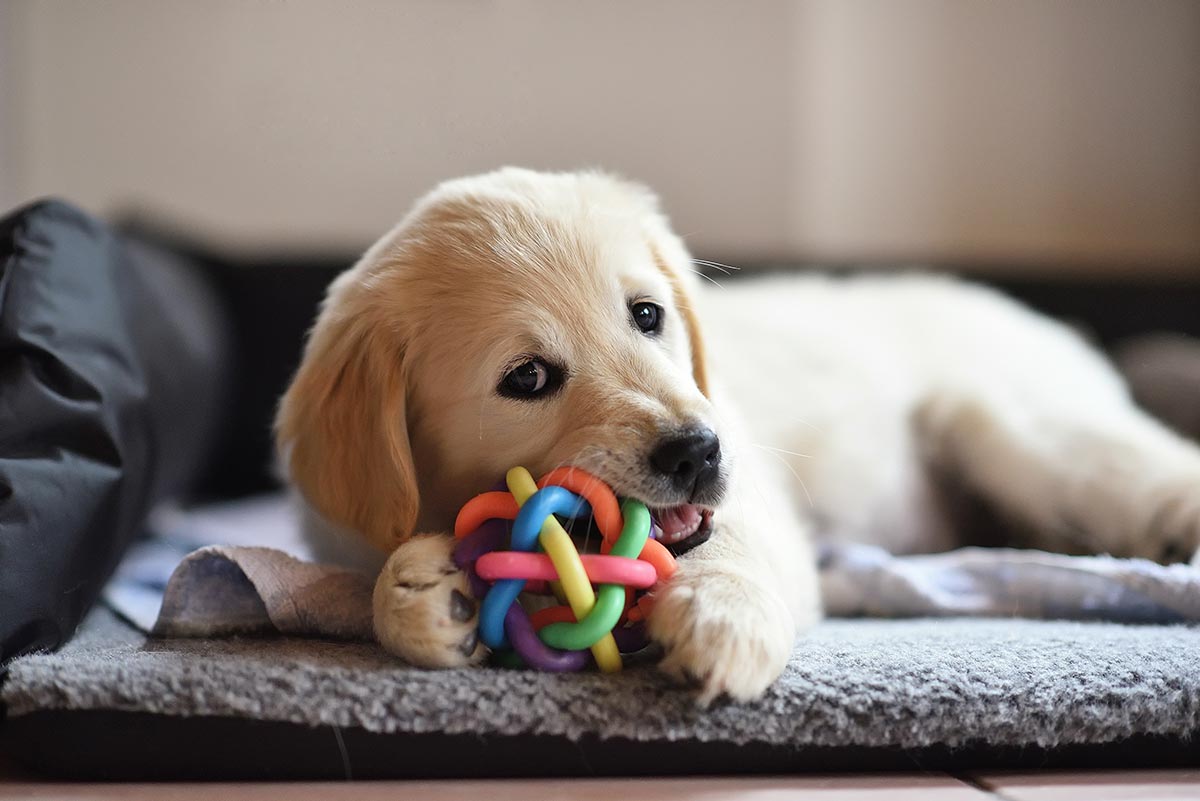Puppies explore and learn about the world in a variety of ways including with their mouths and teeth. Mouthing (grasping without biting), nipping (a small, quick bite that doesn’t break skin), biting, and chewing are normal behaviours in puppies. It’s how they learn, signal for your attention (“pet me, feed me, take me outside!”), instigate play, and relieve discomfort from teething. Meanwhile, their razor-sharp baby teeth can hurt and do some damage, and puppies can learn bad habits that can make them difficult to manage.
It’s important to keep puppies safe during this phase of their development, curb excessive nipping, biting and aggression, and avoid inadvertently reinforcing unwanted behaviours.

Puppy Proofing Your Home
As far as puppies are concerned, anything and everything is fair game for exploring with their mouths and chewing or eating. That includes electric cords, cables and wires, furniture, shoes, clothing, children’s toys, medications, cleaning supplies, detergents, paints, chemicals, batteries, plants, garbage, compost, and foods that are potentially toxic. It’s important to prevent access to anything that could cause them harm (electrocution, choking, gastrointestinal blockage or upset, and so on)

Learning Bite Inhibition
A dog’s ability to control the force he or she uses when mouthing, nipping, or biting is referred to as bite inhibition. Puppies first learn some degree of it when they interact with their littermates and mother. When a puppy bites too hard during play, his or her playmate will yelp and stop playing. The yelp startles the biter, and he or she stops playing too. With some trial and error, a puppy soon learns to ease up when biting so playtime continues uninterrupted. Puppies learn a similar lesson from Mom if they bite too hard while nursing or attempting to get her attention.

Puppies will mouth, nip, and bite people to get their attention, invite play, or attempt to get some relief while teething. They don’t understand that their bite is painful and damaging to human skin. Lessons in bite inhibition need to continue at home until a puppy learns what is/isn’t appropriate for chewing, how to be gentle with his or her mouth, and to stop mouthing or biting people altogether.
